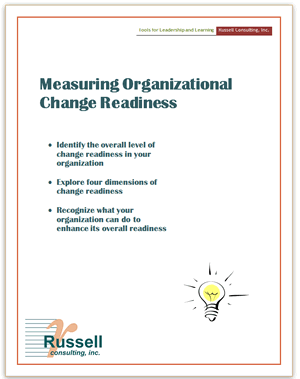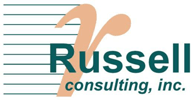 When anyone introduces a change in an organization, there are a number of variables that need to be examined to ensure that the change will be accepted: the level of resistance, the reasons for the change, the sense of urgency that people feel for the need for change, and how comfortable people are with the status quo.
When anyone introduces a change in an organization, there are a number of variables that need to be examined to ensure that the change will be accepted: the level of resistance, the reasons for the change, the sense of urgency that people feel for the need for change, and how comfortable people are with the status quo.
Introducing change in a fearless way means we need to understand the level of readiness in the organization to the new ideas and directions.
What is Change Readiness?
Change readiness is the cognitive and emotional state that occurs when organizational members have positive attitudes, beliefs, and intentions toward the change. If and when an organization (its leaders, managers, and frontline employees) attain this cognitive/emotional state, those who are asked to undergo a change are much more likely to accept the change, their resistance to the new directions and behaviors will be lower, and they are, as a result, much more willing to embrace the change with commitment.
Change readiness is the first of the three cognitive/emotional states or conditions that people experience as they move (or don’t) to embrace a change. These three states are:
Understanding the three cognitive/emotional states or attitudes toward change. When introducing a change, change leaders should strive to develop each of these three developmental states in stakeholders as the change moves forward:
- Readiness is being cognitively and emotionally receptive to a change and is evident through a positive openness toward the change in the attitudes, beliefs, feelings, and intentions of stakeholders.
- Acceptance moves beyond simply being open and receptive to the change. Acceptance involves a belief in the change and a willingness to work with the change.
- Integration builds upon acceptance and is characterized by attitudes, beliefs, feelings, and intentions that wholly reflect the change and which are difficult to separate from the individual’s routine ways of being. Integration is evident when new ways of thinking, feeling, and acting (the objective of the change) are deeply ingrained within the everyday thoughts and behaviors of stakeholders.
Change Readiness Dimensions
Assessing organizational readiness for change involves both the cognitive/emotional state of individual workers as well as the context and organizational environment in which the change is taking place. The dimensions of organizational readiness that we have found matter the most include:
- Organizational Support: This component includes such issues as the clarity of the organization’s vision, the location of decision making, the levels of employee participation in past change efforts, the strength of the organization’s training and development efforts, the extent to which employees’ suggestions are listened to, the quality of communications, and the extent of performance accountability.
- Organizational Culture: This component includes such issues as the degree of cultural receptivity to new ideas/innovation, whether teamwork exists within and between work areas, the level of trust between leaders and employees, whether people come together when under stress, the extent to which employees in the past have actively participated in change efforts, and whether people feel they are responsible for their own success.
- Change Environment: This component includes such issues as the level of awareness of the forces driving change, the clarity of the change and its effects, the quality of the measures to gauge the success of the change, the organization’s past success with change, the number of changes occurring at the same time, and whether the advantages from the change outweigh the disadvantages.
- Employee Attitudes: This component includes such issues as whether or not employees feel a sense of urgency for change, whether employees are fully engaged in their jobs, the degree to which employees are able to act independently in their jobs, whether innovators and risk takers exist at all organizational levels, whether employees feel that they have the opportunity to influence or affect a change, the degree to which employees are receptive to change, and whether employees have confidence in their manager’s ability to guide them through the change
 Russell ConsultIng’s OCRA
Russell ConsultIng’s OCRA
RCI developed the Organizational Change Readiness Assessment (OCRA) tool to help our clients better understand some of the factors that they might need to address to smooth the way to a higher degree of change acceptance. The OCRA has proven to be a powerful instrument to help leaders know where to start with their change initiatives — especially in understanding and dealing with issues that are likely to become barriers to change implementation.
Interested in learning more about our OCRA? Want to integrate in the OCRA into your change leadership?
Contact Russell Consulting or e-mail us and ask for a free copy of the OCRA and to learn how we use the OCRA to help you find a way forward in leading fearless change.

